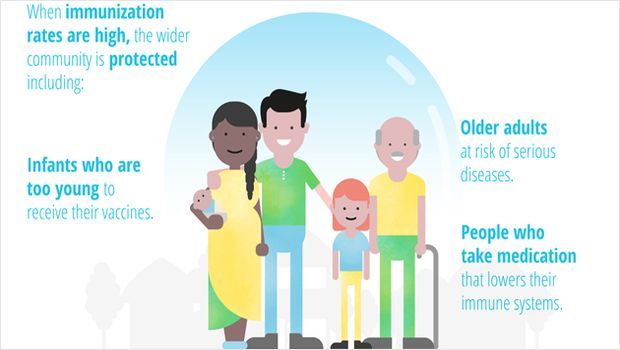World Immunization Week 2017 Marks Halfway Point in Global Vaccine Action Plan


World Immunization Week – celebrated in the last week of April – aims to promote the use of vaccines to protect people of all ages against disease. Immunization saves millions of lives and is widely recognized as one of the world’s most successful and cost-effective health interventions. Today, there are still 19.4 million unvaccinated and under-vaccinated children in the world.
2017 marks the halfway point in the Global Vaccine Action Plan (GVAP) – endorsed by 194 member states of the World Health Assembly in May 2012 – which aims to prevent millions of deaths from vaccine-preventable diseases by 2020 through universal access to immunization.
Despite improvements in individual countries and a strong global rate of new vaccine introduction, all of the targets for disease elimination-including measles, rubella, and maternal and neonatal tetanus-are behind schedule. In order for everyone, everywhere to survive and thrive, countries must make more concerted efforts to reach GVAP goals by 2020. Additionally, those countries that have achieved or made forward progress towards achieving the goals must work to sustain those efforts over time. The main goal of the campaign is to raise awareness about the critical importance of full immunization throughout life, and its role in achieving the 2030 Sustainable Development Goals.
As part of the 2017 campaign, WHO and partners aim to:
- Highlight the importance of immunization as a top global health investment priority.
- Promote understanding of the action steps required to achieve the Global Vaccine Action Plan.
- Showcase immunization’s role in sustainable development and global health security.
Expanding access to immunization is crucial to achieving the Sustainable Development Goals. Routine immunization is a building block of strong primary health care and universal health coverage-it provides a point of contact for health care at the beginning of life and offers every child the chance at a healthy life from the start.
Immunization is also a fundamental strategy in achieving other health priorities, from controlling viral hepatitis, to curbing antimicrobial resistance, to providing a platform for adolescent health and improving antenatal and newborn care.
Source: World Health Organization (WHO)
IDEA in Action: A Strategic Approach to Contamination Control
January 14th 2025Adopting IDEA—identify, define, explain, apply—streamlines contamination control. Infection control professionals can mitigate risks through prevention, intervention, and training, ensuring safer health care environments and reducing frequent contamination challenges.
Balancing Freedom and Safety: When Public Health Mandates Are Necessary
January 9th 2025Public health mandates, such as lockdowns, masking, and vaccination, balance liberty and safety, ensuring critical protections during pandemics like COVID-19 while fostering long-term survival through science.
Long-Term Chronicles: Infection Surveillance Guidance in Long-Term Care Facilities
January 8th 2025Antibiotic stewardship in long-term care facilities relies on McGeer and Loeb criteria to guide infection surveillance and appropriate prescribing, ensuring better outcomes for residents and reducing resistance.
Considering Avian Flu: World Health Organization Expert Warns Against Raw Milk
January 6th 2025Drinking raw milk poses risks of disease transmission, especially with H5N1 outbreaks. Expert Richard J. Webby, PhD, advises against raw cow or goat milk consumption due to its unpredictable and significant risks.